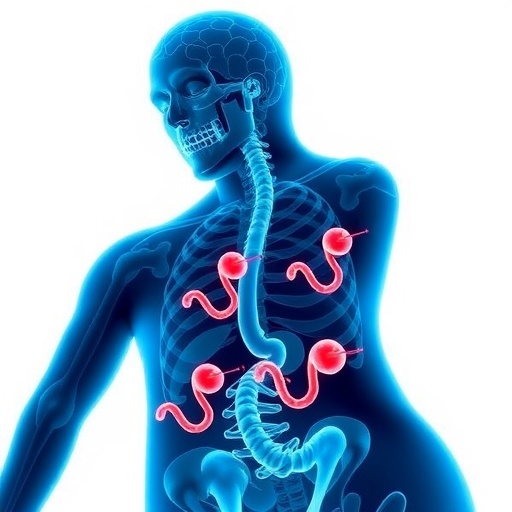
Credit: University of Tübingen/ Sebastian N. Wirtz
A research team from the Universities of Tübingen and Göttingen as well as from the German Center for Infection Research has investigated the mode of action of a new class of antibiotics that is highly effective against multidrug-resistant pathogens. The so-called fibupeptides impair the energy supply to the bacterial cell, consequently causing their death. The research findings have been published recently in the journal Angewandte Chemie.
In 2016, in a widely recognised study, a research team from Tübingen led by Prof Andreas Peschel discovered the first fibupeptide. It is produced by the microbiome itself and the scientists termed it lugdunin, naming it after Staphylococcus lugdunensis bacteria which produce the substance and reside in the mucosa of the human nose. Lugdunin has an unusual chemical structure and consequently constitutes a potential prototype for a completely new class of antibiotics. Amongst other things, it is effective against a type of methicillin-resistant bacteria called Staphylococcus aureus (MRSA), which are particularly dangerous for humans. They are particularly dreaded in hospitals where they often target immunocompromised patients. According to a study published in the journal The Lancet Infectious Diseases in November 2018, approximately 670,000 infections with multidrug-resistant pathogens with 33,000 patient deaths were recorded in the EU alone in 2015.
The researchers have now synthesized chemical variations of lugdunin and determined the structural chemical elements responsible for its effects, which also give indications of the antibiotic’s mode of action. “Each bacterial cell requires a so-called membrane potential in order to live,” explains Schilling. “This means that a pathogen needs different concentrations of electronically charged particles in the cell compared to its outside surroundings. Fibupeptides like lugdunin are able to transport positively charged hydrogen ions across the membrane and consequently dissipate this membrane potential, resulting in a kind of energy standstill,” explains the researcher. Consequently, the bacterial cell dies.
Testing the mirror image structure
The rise of antibiotic resistance is increasingly challenging treatment of bacterial infections. Many of the currently used new antibiotics are only marginally different to antibiotics against which known multidrug-resistance already exist. It may just be a question of a short period time for these new drugs to become ineffective. “Consequently, there is an enormous interest in new antibiotic structures like lugdunin and in their modes of action,” emphasizes Stephanie Grond, Professor for Organic Chemistry and Natural Compound Research at the University of Tübingen. “Lugdunin has a unique structure,” she explains, “consisting of a ring of amino acid building blocks (a peptide structure) with a built-in characteristic sulphur-nitrogen bond, termed thiazolidine, which resembles an ornament clasp (termed “fibula” in Latin). This is why this new class of agents has been named fibu-peptides. The special thiazolidine ring is one of the structures that are essential for the antibacterial effect.
In order to identify the structures responsible for lugdunin’s antibiotic effect, the team of researchers synthesized numerous lugdunin derivatives, gradually changing parts of the chemical structure and determining the antibiotic activity at each step. “As a rule, many of the known peptide antibiotics have very specific effects,” explains Nadine Schilling, “for example, their structure enables them to bind to enzymes and block the pathways required for developing new bacterial cells.” However, lugdunin is different, as a test with its mirror image structure has shown.
“A substance and its mirror image structure can be thought of as a right and left hand. They are not identical, just like a left hand will not fit into a right-handed glove, and the substances consequently have different effects in space,” the researcher explains. “However, the antibiotic effect remained unchanged in a chemically synthesized mirror image structure of lugdunin. We could consequently rule out that the antibiotic effect is based on spatial interactions.” A lack of spatial interactions is advantageous for avoiding resistance and it has not been possible to create resistance to lugdunin under laboratory conditions up to now.
Extensive preclinical and clinical trials are required to elucidate whether fibupeptides can be used as therapeutic candidate agents in future. The researchers involved intend to find out whether lugdunin and related substances are effective and safe for the treatment of multidrug-resistant pathogens. Investigations are being carried out at the Tübingen excellence cluster “Controlling Microbes to Fight Infections”, initiated at the beginning of 2019, and other networks.
###
Media Contact
Dr. Nadine Schilling
[email protected]
Original Source
https:/
Related Journal Article
http://dx.




